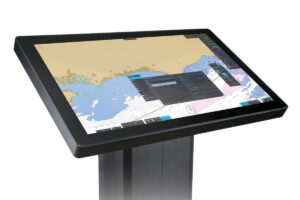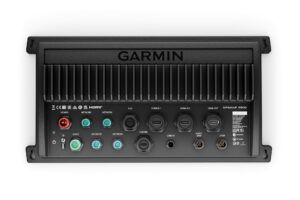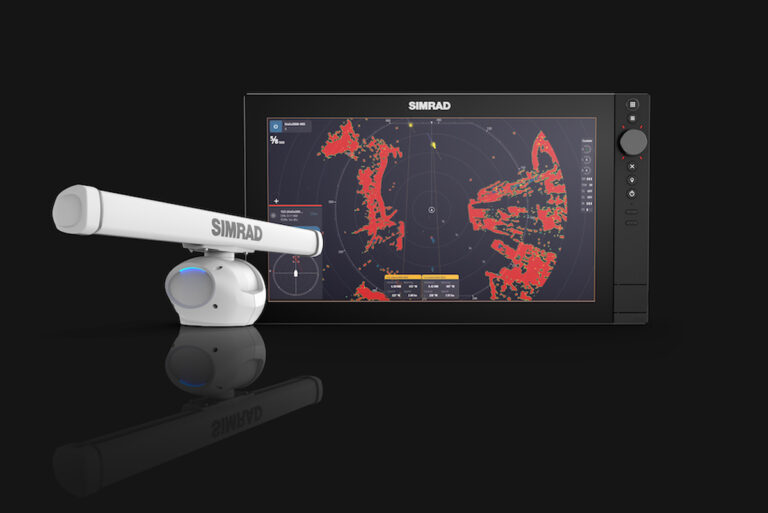
Over the course of three years, a 135-foot Dubois aluminum sloop completed a circumnavigation that included a visit to Antarctica and a deep soak in the high latitudes. Interestingly, her most persistent challenge during this time wasn’t plying the high seas, but rather accommodating her increasingly data-hungry guests. The trouble, explains Capt. Mike Lawrence, is that Destination sails with as many as 20 guest-owned wireless devices operating on the yacht’s network, which also has to support the vessel’s navigational and operational data needs.
The solution, Lawrence says, was to upgrade the yacht’s dual KVH V11-IP satellite-communications antennas to KVH’s V11-HTS antennas, which provide significantly faster service, dual channels and—thanks to their operating frequencies—a massive coverage footprint.
Satellite-communications systems have existed for decades, but the South Pacific, the high latitudes and handsome swaths of the South Atlantic have long been data dead zones. Historically, this has been due to of a lack of demand, as well as the physical size of the antennas needed to utilize the weak signals that exist on these waters.
Fortunately for owners with a taste for speed and off-piste adventures, KVH’s V11-HTS antenna leverages the company’s mini-VSAT Broadband high throughput satellite (HTS) network to deliver dual-channel, high-performance connectivity from virtually all navigable waters.
Abovedeck, the V11-HTS has a stabilized, 1-meter, Very Small Aperture Terminal (VSAT) dish delivering maximum download speeds of 20 megabits per second and maximum upload speeds of three Mbps over its high-speed channel, plus a second unlimited-use channel in a range of data speeds. The V11-HTS ($74,995) delivers these speeds primarily by operating on the Ku frequency band (12 to 18 gigahertz) while automatically switching to the C frequency band (4 to 8 GHz) to support coverage in remote areas or during inclement weather.
Belowdecks, the system uses KVH‘s latest Integrated CommBox Modem (ICM) black box, housing the modem, network manager, Ethernet switches, storage and Wi-Fi card.
“The V11-HTS is for exploration yachts that sail above Alaska, Asia and the Galapagos Islands, not milk runs,” says Jim George, KVH’s director of global leisure sales, adding that yachts longer than 110 feet are a good match for the technology.
The system’s ability to pipe global, high-speed satellite communications to remote locations is a result of the antenna’s 1-meter dish, four-axis stabilization, and supporting hardware and software, as well as KVH’s mini-VSAT Broadband HTS network. This network is comprised of Intelsat Epic satellites, with additional network capacity coming from SKY Perfect JSAT satellites. Unlike traditional satcom transponders, which typically concentrate moderate amounts of power from single beams across wide swaths, HTS satellite beams have considerably smaller footprints, onto which the satellite transponder directs significantly more power. In turn, HTS networks allow service providers to focus multiple beams onto data-hungry areas, to deliver additional bandwidth.
All told, KVH’s mini-VSAT Broadband HTS network delivers 25 million additional square miles of coverage compared to the firm’s original coverage map, along with lower per-megabit data costs, and up to five times faster speeds than comparable (and still-current KVH) equipment. For comparison, KVH’s V11-IP delivers downlink speeds up to 4 Mbps and uplink speeds up to 1 Mbps, while the V11-HTS’ high-speed channel delivers 20-by-3 Mbps speeds (that means 20-Mbps download speed and 3-Mbps upload speed).
The V11-HTS also offers simultaneous dual-channel connectivity courtesy of the system’s 20-by-3 Mbps high-speed channel, and a second unlimited-use data channel that can be configured to deliver 9-by-2 Mbps service. While most owners will reserve the fast channel for A-listers, the second channel is ideal for crew, cloud analytics, data reporting and data-starved grandkids. Moreover, the V11-HTS supports lowest-cost routing and can automatically switch between cellular, satcom and Wi-Fi connectivity, depending on signal availability.
“You could have a crew of eight and six passengers, and no one will see data slowdowns,” George says.
In addition to speed, coverage and an office alibi, KVH also offers powerful network-management tools to reduce unwanted data burn while bolstering cybersecurity. For example, owners can take network-protocol steps to reduce the amount of “invisible” data moving over their networks, such as cloud-syncing services and virus and software updates. Rick Driscoll, KVH’s vice president of service development and implementation, says KVH offers optional services enabling network administrators to tourniquet these data bleeds. Users also can access KVH-supplied data-use analytics tools, including bar graphs detailing daily and monthly use, and pie charts showing how current data use is being sliced.
As for increased cybersecurity, the V11-HTS’s belowdecks ICM ships with KVH’s “cybersecurity at sea” training program preinstalled. This program represents step one of KVH’s bigger “six-level cybersecurity strategy,” which considers onboard hardware and network configurations, and supporting satellite and land-based networks, and includes access to KVH’s cybersecurity response team.
“Traffic passes over the satellite in a secure, encrypted manner and then through threat-detection devices at the terrestrial network’s edge. The V11-HTS supports all traditional secure protocols [including] HTTPS, [and] as a value-added service, KVH can provide end-to-end virtual private-network capabilities.”
While the V11-HTS offers faster speeds, lower airtime costs and better cybersecurity features than its V11-IP forbearer, the two systems have virtually identical hardware, making for an easy upgrade. The antenna delivers high-performance connectivity in places where smaller antennas or terminals operating on different frequencies would struggle, while offering a serious speed gain.









